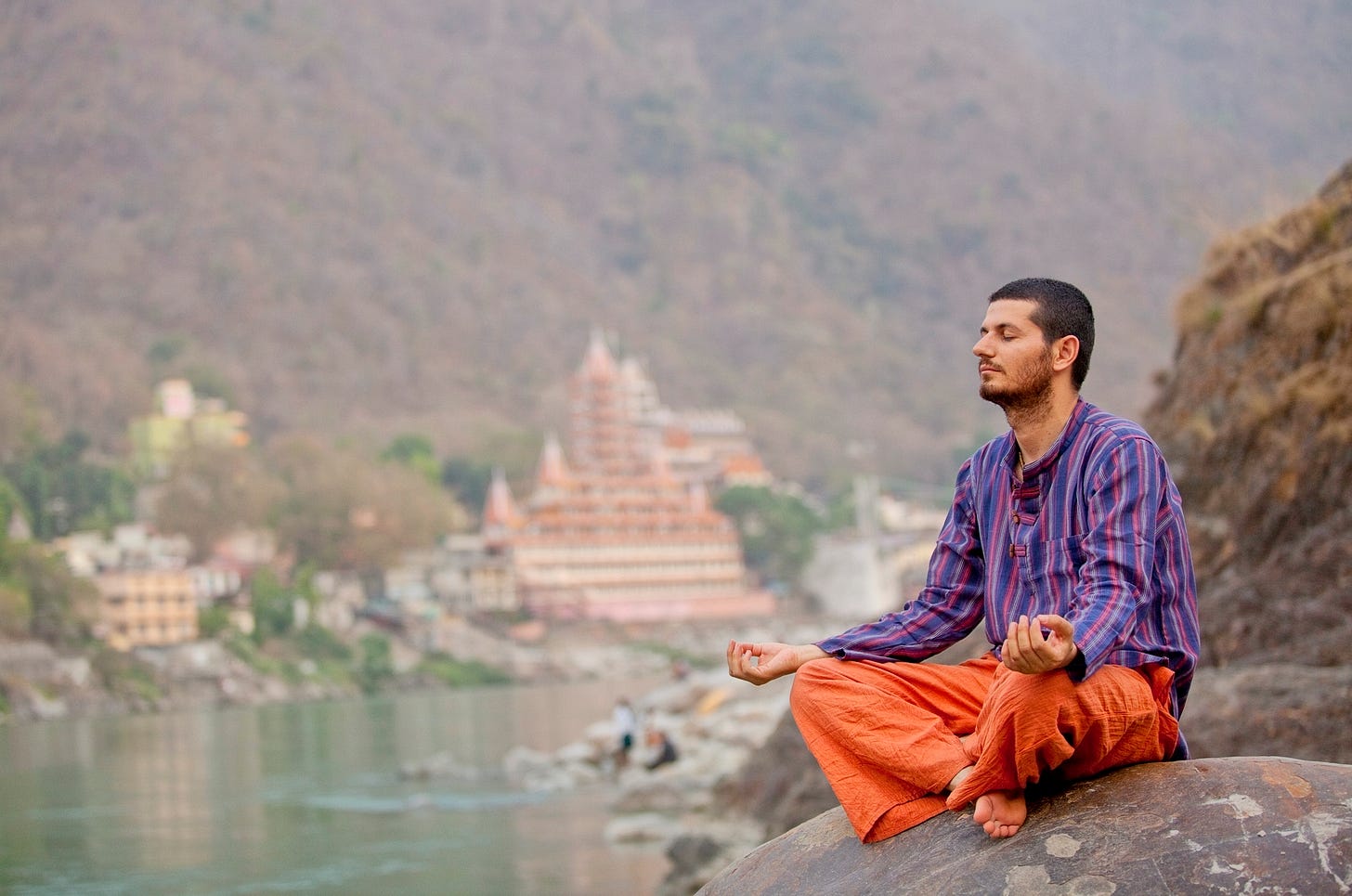A Deeper Dive into Mahamudra and Tibetan Buddhism
With a story about the odd couple of 11th-Century Buddhism
I’m hoping to complete the manuscript for A Buddhist Path to Joy: The New Middle Way Expanded Edition by the end of this week, so I’m sharing with paid From the Pure Land subscribers the draft of the final chapter. If you can’t afford a subscription but want to read the full chapter, email me at mel@melpinehub.com.
Before we go on to the review chapter, let's do some slicing and dicing of Mahamudra. You don't need it to understand the basics, but if you've read this far through both volumes, you may be ready for a deeper dive into the tradition that I feel most able to explain. It's your enlightenment, so the path is your choice. I offer this as one possibility.
As you know, my primary teacher is Yongey Mingyur Rinpoche, who is a member of both the Karma Kagyu and Nyingma lineages of Tibetan Buddhism. He received Karma Kagyu transmissions from masters like Tai Situ Rinpoche, and Nyingma lineage transmissions from his father, Tulku Urgyen Rinpoche, and Nyoshul Khen Rinpoche. His personal spiritual development included mastering the Mahamudra and Dzogchen traditions, and academic studies.
Karma Kagyu and Nyingma are two of the four primary schools of Tibetan Buddhism. Mahamudra and Dzogchen are two approaches to manifesting the same view.
Dzogchen highlights original purity, using terms such as "rigpa" (pure awareness) and traditionally used detailed beginning routines and intricate images before teaching the mind's nature. Mahamudra emphasizes simplicity and naturalness (don't recall, don't imagine, don't think, don't examine, don't control, rest). They're intertwined in Tibetan Buddhism. Many teachers and practitioners study both Mahamudra and Dzogchen, seeing them as different doorways to the same room. Some lineages even speak of "Mahamudra-Dzogchen" as a unified approach. Mingyur Rinpoche uses both approaches in his teaching but emphasizes Mahamudra and his Kagyu lineage.
Tibetan Buddhism arrived in Tibet in two waves:
First Diffusion
Padmasambhava, who is known as Guru Rinpoche, arrived in Tibet between 762 and 774 CE during the reign of King Trisong Detsen. He's credited with establishing the first Buddhist monastery in Tibet at Samye and subduing the local deities and spirits that were supposedly preventing Buddhism from taking root. Guru Rinpoche brought what would become the Nyingma (meaning "ancient") tradition—emphasizing tantric practices, hidden treasure teachings (terma), and the Dzogchen or "Great Perfection" approach to recognizing the nature of mind. His teachings were often elaborate, ritualistic, and deeply embedded with Tibetan shamanic and magical elements.
When Guru Rinpoche arrived, Tibet was just beginning to develop a literate culture and establish Buddhism. The ground was rough (literallyand needed to be prepared—hence the stories about taming local spirits and establishing the basic framework for Buddhist practice. Over the next 300 years, Tibet went through a cycle of Buddhist flowering, decline during the reign of Langdarma, who persecuted Buddhism from 838 to 842, and then revival.
Second Diffusion
A pivotal event in the second wave is known as the Ganges Mahamudra. Around 1067, as legend has it, the teacher Tilopa sang a spontaneous song to Naropa along the banks of the Ganges in what's now India. That powerful teaching transmitted the Mahamudra approach to Naropa, who then began teaching it. His student Marpa, who walked from Tibet and back three times between 1012 and 1097 to translate Buddhist teaching, brought Mahamudra to Tibet.
Keep reading with a 7-day free trial
Subscribe to From the Pure Land to keep reading this post and get 7 days of free access to the full post archives.


